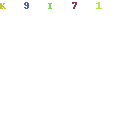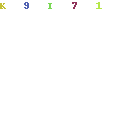It is because Mumbai’s cosmopolitanism is such a visible and inalienable part of the legend of India’s greatest city that Governor B S Koshyari’s recent observation about the contribution of Gujaratis and Rajasthanis to the building of the financial capital raised eyebrows even among people with whom the politics of Marathi pride does not normally resonate.
#WATCH | If Gujaratis and Rajasthanis are removed from Maharashtra, especially Mumbai and Thane, no money would be left here. Mumbai would not be able to remain the financial capital of the country: Maharashtra Governor Bhagat Singh Koshyari pic.twitter.com/l3SlOFMc0v
— ANI (@ANI) July 30, 2022
Those who live in the city see themselves as Mumbaikars — partners in the joys and struggles that are typical of Mumbai, with the divisions of caste, community, region, or gender often blurring in shared public spaces. And yet, the Marathi-Gujarati controversy that the Governor triggered is familiar to the city — a cultural and social argument that has bubbled to the surface repeatedly.
Appended to the core question — “to whom does Mumbai belong?” — have been other issues, such as, “Should Mumbai remain with Maharashtra or get an independent identity as a Union Territory?”
The struggle for Maharashtra
Maharashtra was created on May 1, 1960 by cleaving the bilingual Bombay State into the unilingual states of Maharashtra and Gujarat, dominated linguistically by Marathi and Gujarati speakers respectively. The leadership of the Congress party was forced to retain Mumbai in the new state of Maharashtra. Other suggestions — including handing over Mumbai to Gujarat or making it a Union Territory — were categorically rejected by stalwarts from Maharashtra.
The birth of the new state was preceded by a period of intense turmoil. In 1956, police fired on a peaceful demonstration by the Samyukta Maharashtra Samiti demanding a separate state of Maharashtra, killing 106 people. The stone statue of patriots holding a torch at Hutatma Chowk in the heart of Mumbai is a stark reminder of the blood and sweat that was shed during the agitation for Mumbai (then Bombay).
The firing incident gave impetus to the movement for Maharashtra. Between 1956 and 1960, the Samyukta Maharashtra Movement, which was then led by veteran communist and socialist leaders, played a significant role in ensuring Mumbai (then Bombay) remained with Maharashtra instead of going to Gujarat.
Among the prominent leaders of the Samyukta Maharashtra Movement were Shripad Amrit Dange, Shreedhar Mahadev Joshi, Narayan Gore, Uddhavrao Patil, Annabhau Sathe, Prahlad Keshav Atre, Keshav Sitaram Thackeray, Pandurang Mahadev Bapat, Bhausaheb Raut, Amar Shaikh, G T Madholkar, Madhuri Dandavate, Y K Saini, and Keshavrao Jedhe.
In the decades after Maharashtra was created, however, many complained that its capital did not quite represent the nerve centre of the Marathi identity, and was instead dominated financially and culturally by others, led by Gujaratis.
CPI leader Prakash Reddy said, “The capitalists always favoured a separate Mumbai. If Mumbai has remained in Maharashtra, the credit goes to the city’s common people, the struggling classes, who took to the streets during the Samyukta Maharashtra Movement under the able leadership of communist and socialists leaders.”
He added: “Unfortunately, even today, a handful of capitalists control the city. And they are still working to separate Mumbai from Maharashtra with the patronage of politicians.”
Issue of political polarisation
What is notable is that the Gujarati versus Marathi polarisation has often come into play during successive elections, albeit with changing characteristics.
Broadly, while the Shiv Sena is identified as the custodian of the Marathi interest, the BJP has been seen as the party of Gujaratis. The protection and advancement of the Marathi manoos was indeed a foundational principle of the Shiv Sena.
Former Maharashtra Chief Minister Uddhav Thackeray after paying floral tributes at Hutatma Chowk in South Mumbai on November 30, 2019. (Express Archive)
But in as much of a nod to the innate cosmopolitanism of Mumbai as to the electoral logic of numbers, political parties have reached out to all sections of society. Last year, the Shiv Sena under former Chief Minister Uddhav Thackeray coined the slogan “Khao jalebi, fafda; Uddhav Thackeray aapda (Eat jalebi, fafda, Uddhav Thackeray is ours)”. Jalebi and fafda are snacks popular with Gujaratis. This is also why Governor Koshyari’s statement — that Mumbai and Thane would be left with no money if Gujaratis and Rajasthanis were taken away — struck a discordant note. While the Governor issued a clarification, Thackeray was quick to issue a condemnation of his statements.
Congress leader Husain Dalwai, who has long had a close association with socialist leaders, said, “Mumbai has always embraced people across classes, communities and religions. But it is the hidden agenda of some segments to break it. The state Governor’s remark is an attempt to instigate one community against another. The politics of dividing has always been detrimental for Mumbai.”
Politicians cutting across party lines distanced themselves from Koshyari’s remarks. The Marathi vote bank amounts to 26-30 per cent of the total, while Gujaratis account for up to 17 per cent. A senior Sena leader said, “Although Mumbai was the bone of contention in the creation of Maharashtra and Gujarat, the two communities have learnt to coexist.”
Subscriber Only Stories
And a senior BJP functionary said, “Whether it is the common Marathi manoos or the Gujarati, their basic concern is livelihood and happiness. In Mumbai they seek opportunities to fulfill their aspirations.”
Source: https://indianexpress.com/article/explained/explained-gujarati-marathi-identities-in-cosmopolitan-mumbai-8068654/


